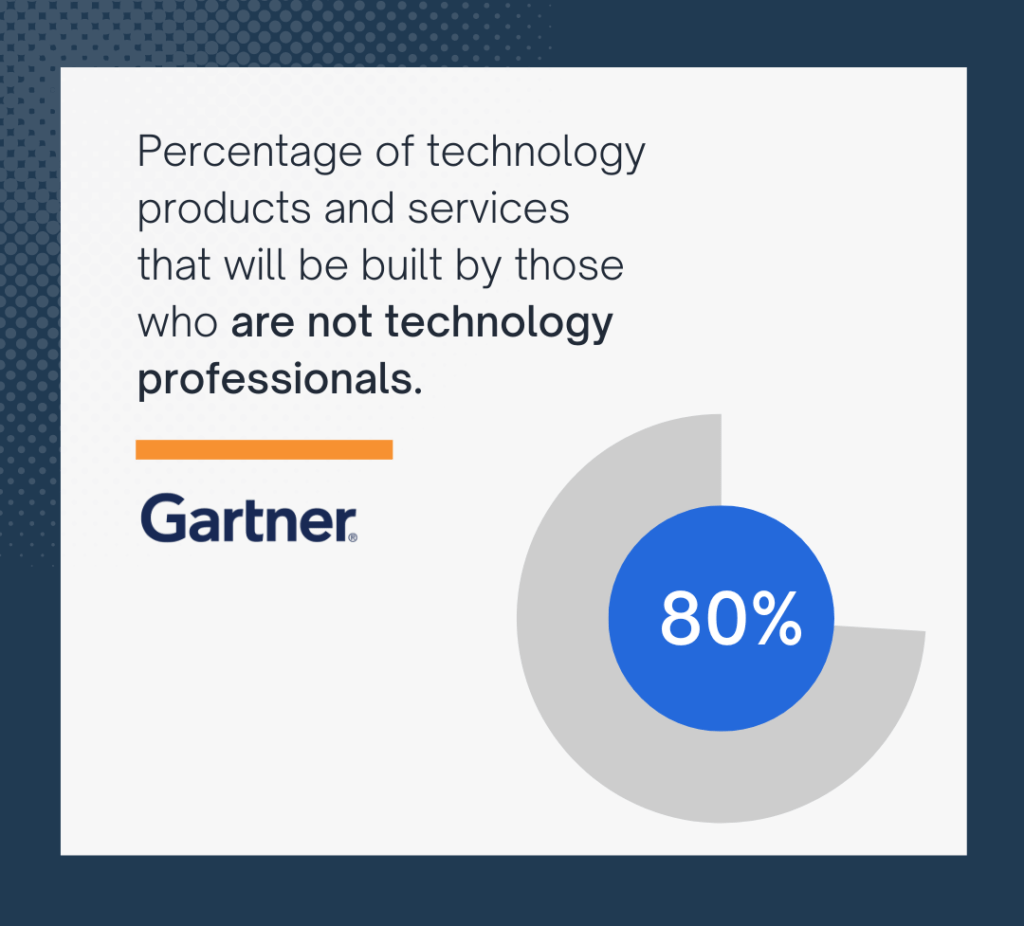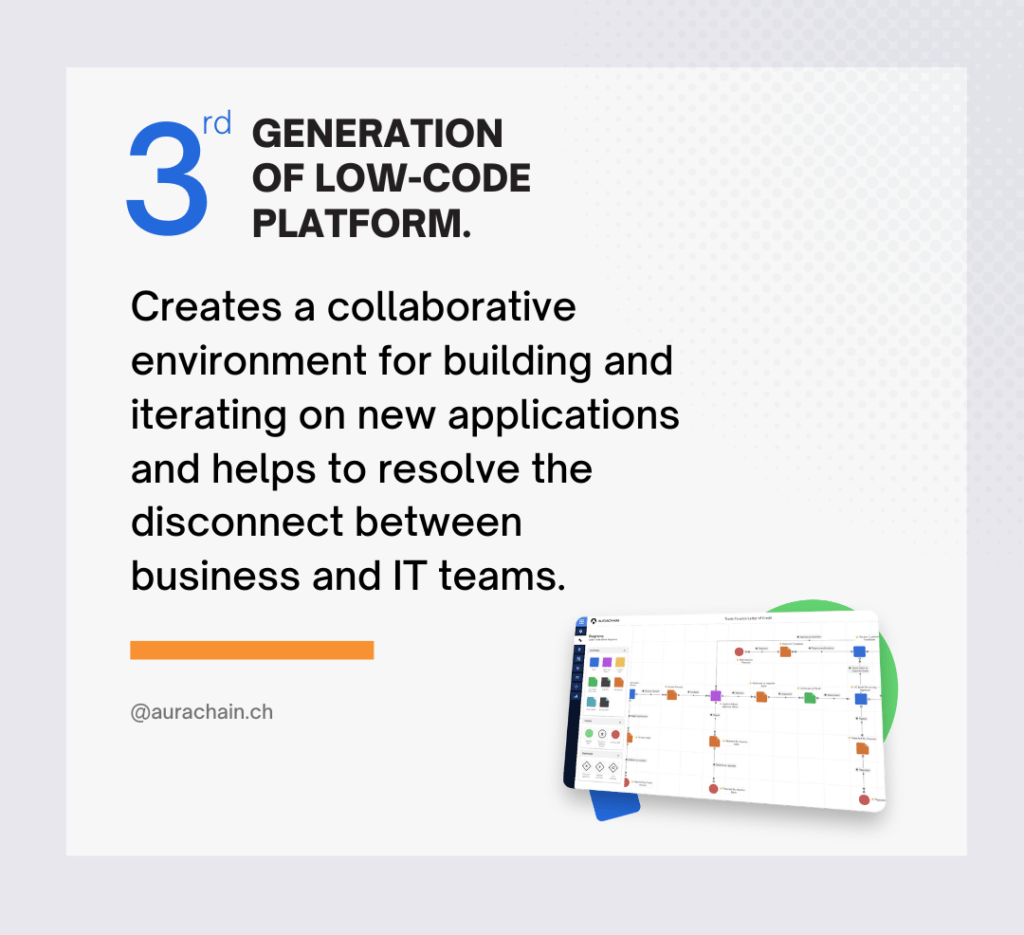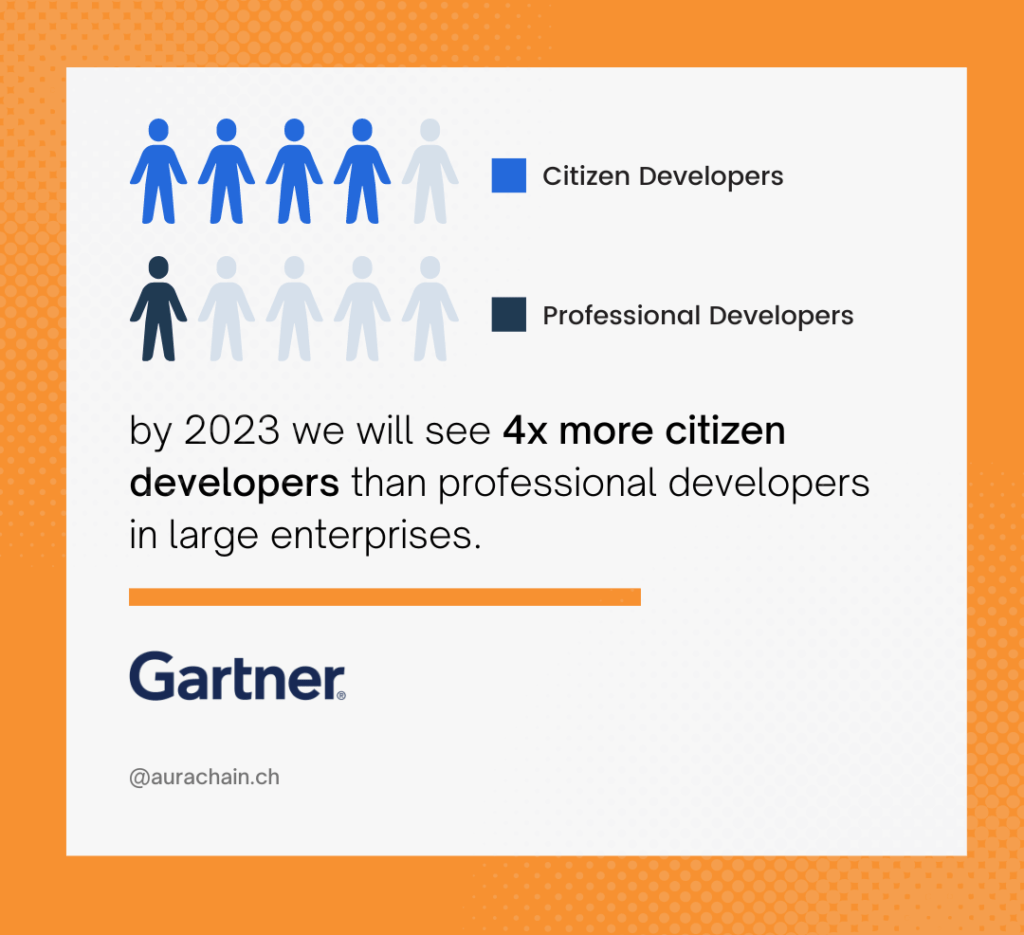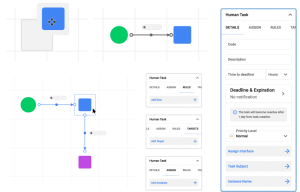Why Enterprises Need Citizen Development for Digital Transformation
Digital transformation is a never-ending story for enterprise organizations. There is no ‘job done’ moment when you can finally proclaim that your company has successfully digitally transformed itself. New, better technology just keeps on coming – and with it comes new possibilities to capitalize on. At least you could… if it wasn’t for that 12-month backlog on IT projects.
Limited resources and a shortage of developer talent mean that technical teams using a more traditional approach to software development will struggle to fight on the multiple fronts posed by digital transformation. Many enterprises have correctly identified that prioritizing the most valuable, high-impact projects is the right way forward. However, progress can often feel as though it is outpaced – and in some cases, set back – by market changes, competitor innovation, and black swan events.
Enterprise organizations must engage with digital transformation in a way that delivers meaningful results but at a faster pace. This is why citizen development should be an essential consideration within any digital transformation strategy.
Citizen Development for Enterprises
Citizen development is a reimagining of the application development process that enables business technologists to build and iterate on new applications. Citizen developers typically use a low-code platform to prototype apps that solve business problems. These apps are built with minimal coding and can then be reviewed and deployed by IT.
Admittedly, the idea is not particularly new – Gartner and Forrester analysts have been championing citizen developers for a number of years now. In fact, Gartner predicts that by 2024, 80% of technology products and services will be built by those who are not technology professionals. That’s quite the endorsement for citizen development. However, it is only very recently that the approach became viable for enterprise-level projects.

The reason for this lies in the progression of low-code technology itself. Low-code tools were initially designed to accelerate development but were, for the most part, still technical platforms limited to use by IT. The focus was on doing things faster, with less coding; but there was no thought given to enabling citizen developers. First-generation platforms were designed to help professional developers build apps faster. As such, the platforms were not intuitive for business users and failed to enhance collaboration between developers and their non-technical colleagues.
This all changed with the wave of second-generation low-code tools. This new branch was designed with citizen developers in mind. Everything was made to be intuitive to business users so that they could build and launch new apps by themselves. However, these second-generation tools have major limitations.
For example, they primarily help the business to build small applications, often at the individual or department level. They are also unable to scale effectively and lack the necessary governance and security capabilities. As a result, enterprise-scale applications are simply off-limits for these tools.
Today’s third-generation platforms provide citizen developers with the speed benefits that have always been associated with low-code development, as well as being intuitive to business users by design – much like many of the second-generation platforms. The key difference, however, is that third-generations platforms combine all of this with enterprise-grade security and governance tools.
It is accepted by third-generation platforms that IT plays a critical role in delivering connected enterprise solutions with consistent, governed data. So, they promote a collaborative approach where both business and IT work on the application together to accelerate delivery and ensure a governed environment. This results in a landscape where citizen developers contribute to solutions that can significantly change how a business works and deliver transformational results.

The benefits of enterprise-grade Citizen Development
1. More hands on deck
IT teams often bear the brunt of immense pressure. They are tasked with modernizing infrastructure, overseeing security, and ensuring governance policy is adhered to – all while the organization relies on them to build, test, and approve new business-critical apps.
Gartner analysts predict that by 2023 we will see 4x more citizen developers than professional developers in large enterprises. Meanwhile, Forrester also predicts that there will be a deficit of over 500,000 software developers by 2024. The message is clear. Enterprise organizations should embrace citizen development because, as demand for software continues to rise, it will only become more difficult to quench that thirst with traditional approaches.
Citizen development allows enterprises to meet the growing need for business apps while simultaneously addressing the global shortage of skilled developer talent.

2. Ensure strong governance for the enterprise
It’s no secret that business users already find creative ways to fix business problems. In most cases, this takes the form of spreadsheet solutions or desktop databases built by an individual or within a department. This is the shadow IT problem – where a network of solutions pops up around the organization, but IT has no awareness of them and certainly no visibility into them.
Third-generation low-code platforms resolve the issue of shadow IT by bringing citizen developers into the fold. Instead of creating simple spreadsheet solutions that lie outside of IT governance, business users are given a powerful development tool with far greater functionality. What’s more, the platform ensures that IT is kept in the loop. Strong security and governance tools – all of which can be configured to reflect the profile of the enterprise – provide IT with full visibility into what’s happening on the platform.
When a citizen development approach is strategically implemented, business-critical apps are built on an IT-approved platform. More software is delivered across the enterprise, while IT has everything they need to ensure quality and security.
3. Resolve the disconnect between business and IT
The common disconnect between business and IT is never more apparent than during those lengthy requirement gathering sessions at the start of a new project.
Business leaders know the problem they want to fix, and they know how they want the new application to function. But this does not mean they know how to communicate this to IT in a way that is fully understood.
Meanwhile, IT is often too far removed from a specific business domain to grasp the ins and outs of how it should work, or the vocabulary that it uses. This creates communication issues and can lead to incorrect assumptions.
Citizen development, with the support of a third-generation low-code platform, creates a collaborative environment for building and iterating on new applications. This helps to resolve the disconnect between business and IT teams.
Everyone works within the same platform where communication is underpinned by a visual canvas. The business doesn’t have to worry about IT misinterpreting what they want because they can contribute their expertise directly – and where things get too complex, a professional developer can step in to handle any scripting requirements with a full picture of the work that has already been done.
Want to learn more about how Aurachain enables citizen development for enterprise-grade solutions?
Get in touch today to book a platform demonstration.





